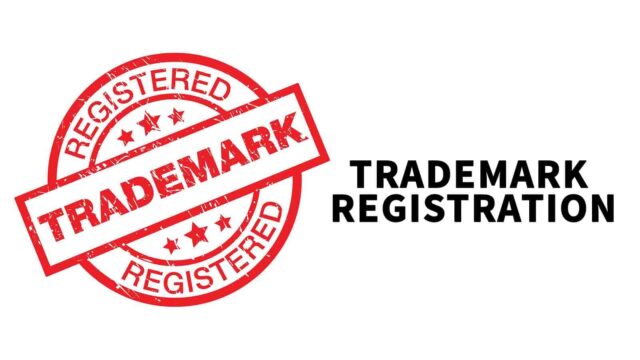
Registering a trademark is a labor-intensive process that requires an investment of time and money. A trademark is a designation with the help of which other people distinguish your company from competitors. This could be a slogan, a logo, or a melody, thanks to which customers recognize you. Registering a trademark is a guarantee that no one but you will use your business name. Rarely does anyone succeed in registering a trademark the first time; it is a difficult process with non-obvious nuances.
Our company specializes in establishing and licensing businesses around the world. We also offer an extensive range of corporate services, including trademark registration. Our specialists understand all the intricacies of this process and are ready to provide you with comprehensive support.
Introduction to Trademark Registration Process
The most important thing that your company receives when deciding to protect your brand with trademarks is a guarantee of security for its money. Every entrepreneur invests in promoting their brand. Pays for advertising, promotion in search engines and social networks, develops packaging, and orders advertising materials from the printing house. The brand becomes recognizable.
If a brand is not registered, anyone can register a trademark for themselves. And we’re not just talking about competitors and companies from other regions. There are so-called patent scammers. These are people who look for unregistered brands, register them in their name, and demand money from business owners for the opportunity to continue using the trademark – their own name.
A trademark has its own characteristics when compared with other manifestations of property. Unlike a trademark, a logo does not need to be registered. Essentially, it is a visual representation or verbal inscription of a trademark and is not a legal term.
A brand is a much broader concept than a trademark. It is directly related to emotions and value characteristics. Companies invest a lot of money in the formation and development of a brand; it is important for them that it evokes strong positive associations among consumers. Therefore, products with a strong and recognizable brand are often more expensive or more popular.
A brand is expressed through a complex set of corporate elements: brand name, logo, palette of corporate colors, original graphics, sounds, etc.
Key Steps for Trademark Registration Process
In order to register a trademark, first of all, it is necessary to carry out preliminary work. First, you need to decide on the form and method of expression. A trademark can be verbal, visual, three-dimensional (product packaging, its shape), sound, olfactory, or combined. When choosing a trademark, remember that it should not contain state symbols and signs, the name of other foreign organizations, symbols, and designations generally accepted or similar to those of other brands.
Next, you need to check the trademark for plagiarism. If you use a trademark that is confusingly similar to the brand of another company, you can run into a fine. You can usually check a trademark variant using a special electronic database in the state registry. In some jurisdictions, the service is provided for a fee. You can also find other services on the Internet.
The next-mentioned trademark documentation is required during the procedure.
- Application for state registration of a trademark.
- Declared designation in free form.
- List of goods/services that are grouped into classes/categories in accordance with the provisions for registration of marks.
- Description of the claimed designation.
Trademark Application Tips: Submission and Registration
As already mentioned, you need to choose which trademark you will register. They are like this.
- Verbal: words, phrases, sometimes even whole sentences. They can be in any language.
- Images of anything: animals, plants, natural phenomena, figures or colors.
- Combined ones include images, words, and something else.
- Volumetric is when a specific shape of a product is registered.
One of the trademark challenges is choosing which classes of goods and services the trademark will cover. This can only be done once when you submit your application. If a company lists some products and then wants to sell others under the same trademark, it will no longer be possible to add new ones.
An application for trademark registration must be submitted for each trademark separately. To register, you must submit a proper application, to provide the required additional documents, and pay the state fee.
As our trademark registration recommends, say, an application for registration of a trademark must contain the following:
- application for trademark registration;
- power of attorney if the applicants have a common representative and not all applicants have signed the application;
- documents certifying priority, if priority is applied for;
- statute of a collective trademark if the application is submitted for a collective trademark;
- charter of the certification mark if the application is submitted under the certification mark
The amount of the state fee paid for conducting an examination of an application for registration of a trademark depends on how many classes of goods or services the trademark is protected for.
Registering a trademark provides a number of other advantages:
- company profits increase when the brand becomes recognizable;
- it may receive royalties from the use of the trademark under a license;
- it can sell a franchise;
- through the court can receive compensation from violators (believe me, they will be found over time);
- there is an opportunity to start working with large networks;
- a brand can be made an intangible asset of a company, which will increase its value.
According to some laws, it is not necessary to register a trademark. But without registration, business owners cannot be sure that the brand will belong to them tomorrow and that all the money invested in promotion will not go to competitors.
As a rule, it is precisely this kind of help that companies turn to patent attorneys for the correspondence with the next trademark registration essentials:
- carefully check the trademark before registration;
- help you choose the right classes and not overpay the state fee;
- fill out and send documents correctly
If a refusal is received, the patent attorney will try to challenge it.
Our company is ready to take on the entire process of registering your trademark. We understand the intricacies of the legislation and all the nuances of this procedure. Contact us right now.
The article’s author is Denys Chernyshov – founder and CEO of the globally-famous organization Eternity Law International.








